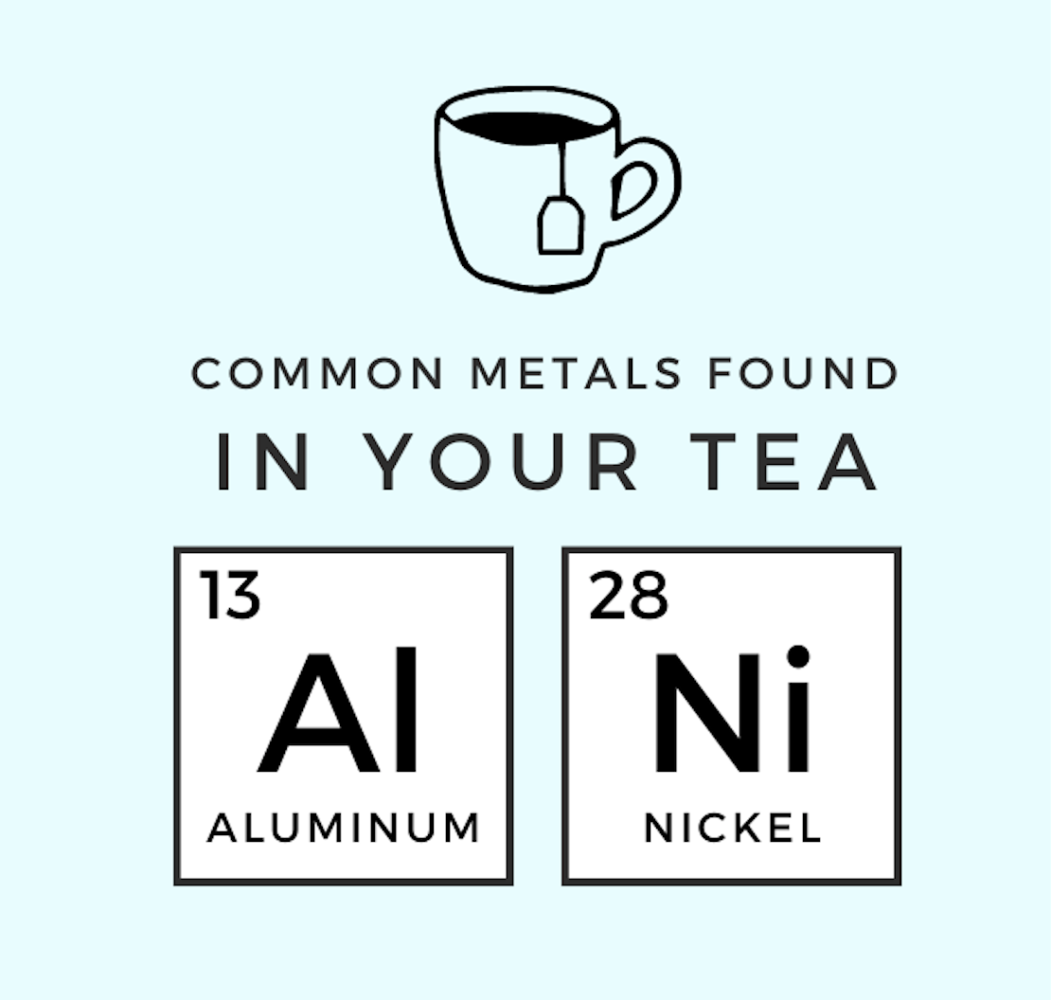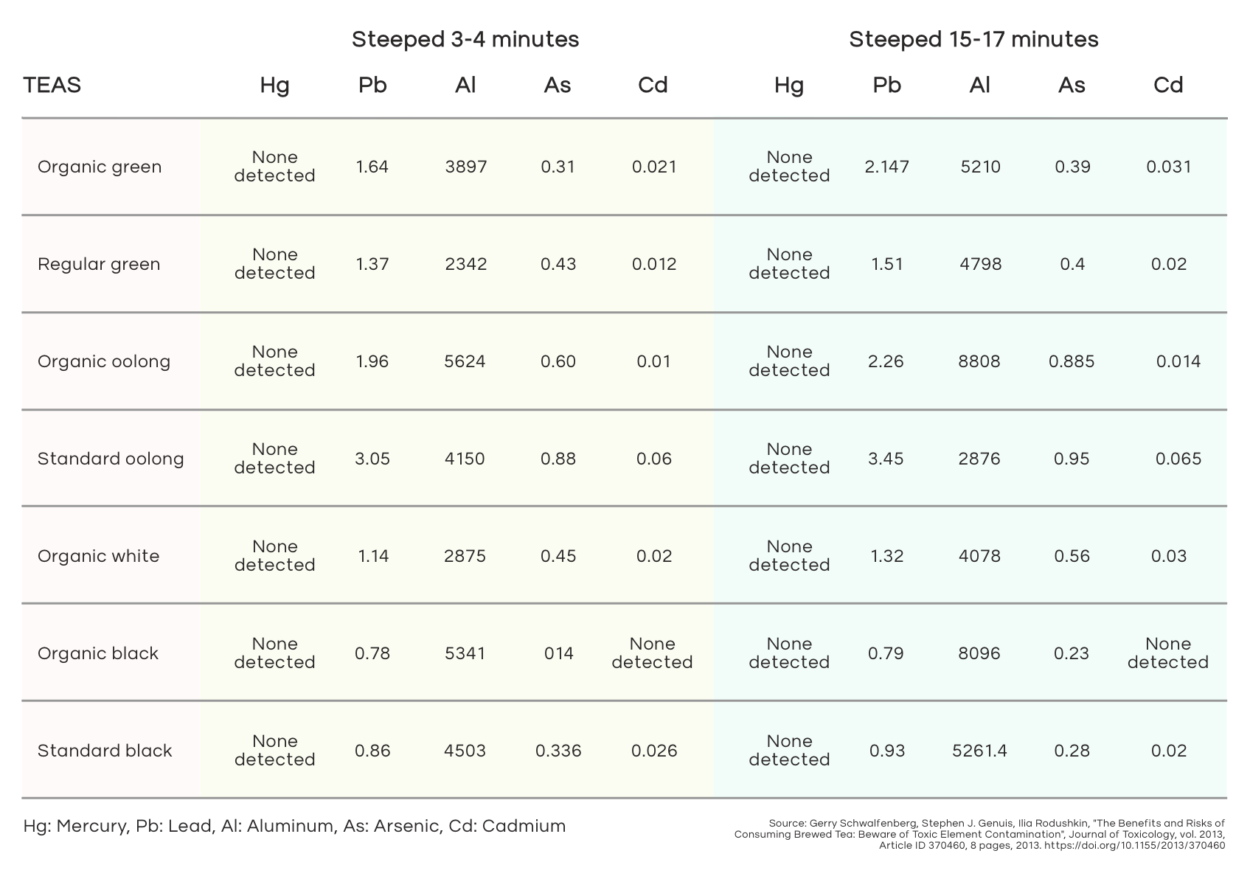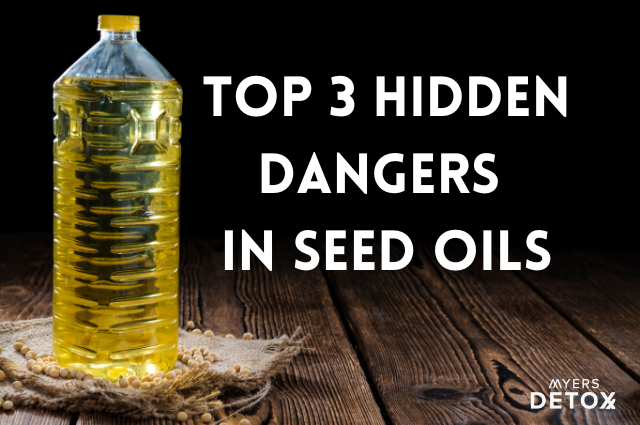Are there heavy metals hiding in your morning caffeine boost? It seems like we just can’t avoid these toxic compounds. If you’re a coffee or tea drinker, read on to learn more about the heavy metals that may be lurking in your favorite beverages.
In this article, you’ll learn:
- How heavy metals may be damaging your body
- The heavy metals hiding in your tea
- The heavy metals in some coffees
- If you should stop drinking coffee and tea due to contamination concerns
- Alternatives to Caffeinated coffee and tea
- Where the metals in coffee and tea are coming from
- How to protect your body from heavy metal toxicity
Heavy Metals Are Lurking In Your Coffee and Tea
If you’re a health-conscious person, you probably put a good deal of thought into what foods you eat on a regular basis. By now, you’ve probably traded in some of those convenient packaged foods for more real, whole foods. You might even make weekly trips to the farmers market or invest in a CSA box.
But what about your morning pick-me-up? With so much focus on food quality, the beverages we consume daily tend to take the back-burner when it comes to assessing the health benefits and quality.
Just like the food you eat, however, the beverages you consume regularly need to undergo the same type of scrutiny for contaminants and quality.
Unfortunately, heavy metals may be sneaking into your body through your morning ritual. That’s right; both coffee and tea may contain heavy metals that are slowly damaging your health.
The real issue here is that if you’re a coffee or tea drinker, you’re likely to have at least one (if not two or three) cups a day. This could result in an accumulation of toxic exposure overtime.
What Heavy Metals Do In Your Body
Heavy metals are elements that have a high density, or weight — hence the name “heavy.” These elements, although naturally occurring in the earth’s crust, can interfere in your body function — especially when they’re accumulated overtime.
Heavy metals accumulate in living systems like plants, animals, and humans. In your body, heavy metals are transported to cells and tissues where they can bind to proteins and enzymes, damaging them and altering their activity.
This can result in neurotoxicity, free-radical generation (oxidative stress), and damage to lipids, proteins, and DNA molecules. They even interfere in cell and DNA replication.
Pretty much every system in your body, along with your vital organs, can be damaged by the accumulation of heavy metals. These include your lungs, liver, kidneys, and central nervous system[1].
The Heavy Metals Hiding In Your Tea
Drinking tea can be a wonderful way to either perk up or wind down — depending on the type of tea you’re enjoying. For many tea drinkers, it starts with a morning cup of caffeinated tea, and the end of the day is marked by a soothing and relaxing herbal blend like passion flower or chamomile.
While you’re sipping your tea, the last thing on your mind is likely heavy metals. Unfortunately, research shows that the tea you’re drinking may commonly be a source of two heavy metals — aluminum and nickel.
Aluminum
 In one study, researchers assessed the bioavailability of aluminum in tea. The bioavailability of a food or nutrient represents how well your body is able to digest and absorb it. The researchers found that aluminum had a significant oral bioavailability, meaning that tea drinking could be an easy route for aluminum absorption. They stated that drinking tea daily could result in a significant amount of aluminum reaching systemic circulation[2].
In one study, researchers assessed the bioavailability of aluminum in tea. The bioavailability of a food or nutrient represents how well your body is able to digest and absorb it. The researchers found that aluminum had a significant oral bioavailability, meaning that tea drinking could be an easy route for aluminum absorption. They stated that drinking tea daily could result in a significant amount of aluminum reaching systemic circulation[2].
Aluminum is very neurophillic. It likes fat cells, nervous system and brain cells, which are mainly comprised of fat. Aluminum may produce toxicity to the central nervous system as it binds to proteins and can cause cross-linking, damaging their function. People with high levels of aluminum tend to have a high concentration in their brain tissue, which has led some researchers to believe that aluminum may have a role in neurodegenerative disease.
Some neurotoxic effects that have been correlated with aluminum include impaired learning, memory, concentration, as well as disorientation, also known as brain fog [3].
Nickel
In another study, researchers found high levels of nickel in both black tea, red tea and green tea preparations, with green tea containing more than four times the amount of black tea[4].
Through a series of chemical reactions, nickel can produce powerful reactive oxygen species on your body. Reactive oxygen species (ROS), also known as free-radicals, can cause damage to your cells and tissues as they are highly unstable.
Research shows that the oxidative damage caused by nickel and it’s ROS byproducts can affect the genetic material within your cells, causing something called genotoxicity. Nickel can also affect your immune system, causing toxicity to your cells and potentially resulting in immunosuppression[5][6]
How Much Heavy Metal Contamination Is Found in Tea?
I wanted to highlight a study on heavy metals in teas. It’s from the Journal of Toxicology called The Benefits and Risks of Consuming Brewed Tea: Beware of Toxic Element Contamination. [16]
The variety of tea used in this study was camellia sinensis, which is the plant used to make all traditional teas like green tea, black tea, oolong tea, etc.
All of the 30 teas they tested contained harmful metals like lead, arsenic, aluminum and cadmium, some at levels considered unsafe. The study writers noted that, “Organic teas did not appear to have less toxic element contamination than regular teas even from the same company.”
Lead. All brewed tea and tea leaves had detectable lead levels with Chinese oolong teas having the highest levels, followed by green tea and regular black tea having lower levels. 73% of teas brewed for 3 minutes contained lead. While, 83% brewed for 15 minutes had lead levels considered unsafe for consumption during pregnancy and lactation.
Aluminum. All brewed teas steeped for 3 or 15 minutes contained detectable levels of aluminum. Aluminum levels were above recommended guidelines in 20% of brewed teas.
Arsenic. All brewed tea and tea leaves had detectable arsenic with Chinese oolong teas (organic or regular) having the highest levels.
Cadmium. All tea leaves had detectable levels of cadmium. 21 teas had detectable levels after 15 minutes brewing while only 18 teas had detectable levels after 3 minutes brewing suggesting that there is further leaching of this toxicant into the water over time.
Mercury. No mercury was found at detectable levels in any brewed tea samples. Mercury is bound in the leaf in a way that it does not make its way into the brewed tea at levels that are detectable.
Cesium. All tea leaves and brewed teas had detectable levels of cesium.
Tin. All tea leaves had detectable levels of tin but only two brewed samples had nonsignificant levels detected in the teas.
Thallium, Barium, Antimony. All tea leaves and all teas had detectable levels of barium, antimony and thallium but none had levels considered to be of concern.
Sadly, there are no existing guidelines for routine testing or reporting of heavy metal levels that are “naturally” occurring in products like coffee and tea. I’m hoping this will change in the future so consumers are aware of what they are consuming.

The Heavy Metals Lurking In Your Coffee
While tea can feel like a ritual, coffee often feels like a downright vice. That’s why I share this information with the utmost compassion for the coffee lovers out there. I’m one of you!!
Cadmium
 As delicious as your morning cup of Joe may taste, the coffee plant readily absorbs the heavy metal cadmium. In fact, the ability for coffee to absorb cadmium is so strong that it has even been suggested as an adsorbent compound for clearing industrial and drinking water of this heavy metal[7].
As delicious as your morning cup of Joe may taste, the coffee plant readily absorbs the heavy metal cadmium. In fact, the ability for coffee to absorb cadmium is so strong that it has even been suggested as an adsorbent compound for clearing industrial and drinking water of this heavy metal[7].
The cadmium content of coffee is going to be dependent upon the cadmium content of the soil in which it is grown. So cadmium levels in coffee can vary widely.
Furthermore, in populations that consume significant amounts of coffee, researchers have found correlations of high levels of cadmium in the blood of participants[8].
Research into the levels of cadmium in different types of coffee seems to vary, with ground instant coffee potentially being the most potent source[9].
Long term exposure to cadmium is associated with organ system toxicity and may affect your skeletal, urinary, reproductive, cardiovascular, central and peripheral nervous systems[10]. Cadmium also causes mutations when cells attempt to divide, resulting in tumors.
Lead
Another heavy metal that’s been found in high levels in some coffee varieties is lead. While some sources will argue that the levels of lead found in coffee are below the regulatory limits, the fact of the matter is — there is no safe level of lead in your body (and the World Health Organization agrees)[11][12].
Lead exposure can be particularly dangerous for the central nervous system, potentially leading to behavioral or neurological issues over time. In lead exposure, issues such as difficulties in learning, language, memory, attention, and processing have all been identified as possible correlations[13]. Lead tends to accumulate in the bones.
Where Are the Heavy Metals in Tea and Coffee Coming From?
Typically, heavy metals contaminate the environment by finding their way into the air you breathe, water you drink, and food you eat. In the case of coffee and tea, these metals can be found in the soil that these plants are grown in.
Coffee and tea plants are excellent at drawing minerals and nutrients from the soil – but they also are adept at accumulating toxins like heavy metals as well.
Heavy metals in tea and coffee are directly related to the use of coal fired power plants and industrial manufacturing, which dredge up metals from the earth. These toxins then get into the air, soil, water and ultimately into our food.
The use of coal in China has increased to 3.8 billion tons or about 47% of global coal consumption. Coal burning power plants supply 70% of the energy in China. This makes its way into the millions of pounds of tea grown in this country for export. There are similar issues in tea from india. Not all teas from these countries are contaminated, but one needs to be a savvy consumer when purchasing tea.
Alternatives to Caffeinated Tea and Coffee
Cutting back on your caffeinated beverages may feel like a lot to ask, especially if you’ve been enjoying your morning cup for decades (as most of us have). However, there are plenty of alternative drinks out there that can provide a similar taste, and some can even give you natural energy support.

Some options include:
- Chicory coffee is the most popular caffeinated coffee-alternative out there. The chicory root gives you that roasted flavor you know and love, and comes as close to the real taste of coffee as I’ve found.
- Rooibos tea offers a fantastic alternative to black tea. It has a similar dark color, but due to its low tannin content offers more of a fruity flavor as opposed to bitter. It’s also rich in antioxidants[14]. Look for a Rooibos from South Africa and avoid ones from India, which could contain lead. Rooibos is a red bush (not a tea plant) that flourishes in the jungle without the need for pesticides.
- Rhodiola tea is an adaptogen that’s known to reduce stress and support healthy energy levels[15].
While these options may help you ease off caffeine, the unfortunate truth is that toxins and contaminants are everywhere in our food supply. Cutting back on your morning cup is definitely a start, but if you really want to protect your body against heavy metals, you may need to do a little more work with a regular detox routine.
Should You Stop Drinking Tea and Coffee?
The short answer is no. I enjoy my tea and coffee. I drink in moderation. I have one cup per day. Some days I have two. But no more than that. I am committed to only drinking organic coffee and tea to avoid pesticides and chemicals. I don’t drink tea that is in tea bags (the glues in many tea bags are a concern).
But even with these precautions you can still get toxic metals from coffee and tea. The reality today is that all food has contamination to some degree, be it heavy metals, pesticides or chemicals. These toxins are in the air, food and water. So, avoiding tea or coffee, or animal protein or any other food group (unless it is a clear hazard) doesn’t make a lot of sense. You’d have to be a breatharian!
It is insufficient to simply look at isolated exposures to toxins, but rather to look at the total cumulative exposure. People are being exposed to lead, for example, from drinking contaminated tea as well as tainted supplements [17], from consuming contaminated drinking water from lead pipes [18], from eating or drinking from dinnerware containing lead [19], and so on. You cannot pinpoint one source. The exposures are daily and continuous.
What makes more sense is to enjoy the benefits of the nutrients, polyphenols and antioxidants found in coffee and tea, but embark on a sensible daily detox program.
How to Detect Heavy Metals in Your Body
If you think you’ve been exposed to pollutants from your coffee or tea, the best thing you can do is test your heavy metal and mineral levels.
I recommend a Hair Tissue Mineral Analysis (HTMA) test because it’s the least expensive and most convenient way to test for contaminants like lead, nickel, and aluminum. It doesn’t require any type of blood draw either – just a small sample of your hair. And there’s no need to even leave the house!
HTMA testing measures heavy metal and mineral concentrations in your hair, which is one of the most common places that heavy metals like to hide. It’s a good way to get a highly accurate snapshot of what’s going on in your body without invasive procedures or expensive scans.
Using an HTMA, you can identify exactly which heavy metals have infiltrated and been absorbed by your body and take actionable steps to protect your health.
The information revealed in an HTMA is crucial because, once you have pinpointed which pollutants are in your system, you can take actionable steps to:
- Support the body’s natural excretion of these pollutants from your system
- Shield yourself from further exposure to sources of these toxic health hazards
- Detox from everyday living
- Support and maintain a clean and healthy lifestyle
Once you have your HTMA test results, you can look at them with a trained practitioner and come up with a personalized plan to support your body’s natural detoxification.
If you think you’ve been exposed to health hazards like arsenic and it may be hiding in your system, order a Hair Tissue Mineral Analysis. From there, you can plan your next steps to reclaim your vitality.
*Please note that a Hair Mineral Analysis (HTMA) is not intended to diagnose, treat, cure, reverse, or prevent any disease. It is not intended to replace any other medical test(s) that may be prescribed by your medical doctor.









